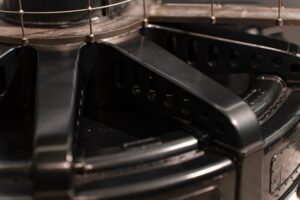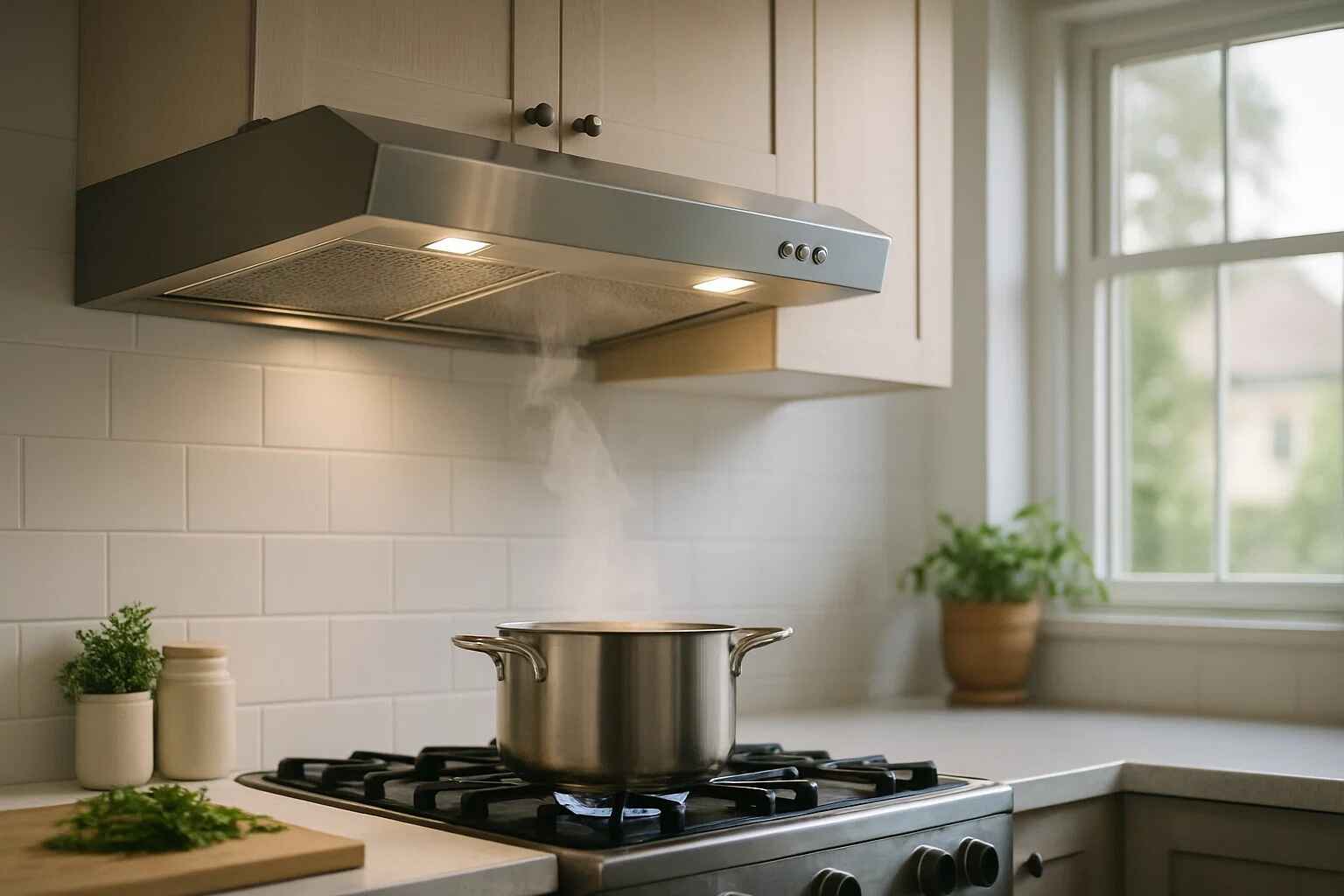Introduction
That sizzling stir-fry and roasting chicken fill your kitchen with delicious aromas. But they also release grease, moisture, and odors that linger for hours. An efficient kitchen extractor fan, or range hood, is your first line of defense. It purifies your air, protects your surfaces, and creates a more pleasant cooking environment. This guide will help you understand everything from types and features to installation and maintenance. Transform your kitchen from a smoky, greasy room into a fresh, clean space you love.
Why You Absolutely Need a Kitchen Extractor Fan
A quality extractor fan is crucial for any kitchen. It actively removes airborne grease, smoke, and cooking fumes. This prevents these particles from settling on your cabinets and walls. It also eliminates persistent food odors efficiently. Furthermore, it reduces excess humidity from boiling and steaming. This helps prevent mold growth and moisture damage.
The Health Benefits of Proper Kitchen Ventilation
Improving your indoor air quality directly impacts your well-being. Gas stoves can emit nitrogen dioxide and carbon monoxide. A powerful hood vents these pollutants outside. It also reduces exposure to harmful particulate matter from cooking. This is vital for households with allergy or asthma sufferers. Breathing cleaner air makes your home a healthier place.

Understanding the Two Main Venting Types
Kitchen extractor fans operate in two primary ways. Each system has distinct advantages and installation requirements.
Ducted (Vented) Systems
Ducted systems expel air directly outside your home. A duct pipe channels the contaminated air through an exterior wall or the roof. This is the most effective method for removing heat, steam, and odors. It provides superior overall performance for serious cooks.
Ductless (Recirculating) Systems
Ductless models filter the air through charcoal and grease filters. They then recirculate the cleaned air back into the kitchen. This option is ideal where ducting is impossible. However, it is generally less effective at removing heat and humidity.
Key Features to Consider When Buying
Modern extractor fans come with various features. Consider these aspects to find your perfect match.
-
CFM (Cubic Feet per Minute): Measures airflow power. Higher CFM means stronger suction.
-
Sones (Noise Level): Measures sound output. Lower sones mean a quieter operation.
-
Filter Type: Grease filters are standard. Ductless models also require replaceable carbon filters.
-
Lighting: Integrated LED or halogen lights illuminate your cooktop.
-
Controls: Options include manual slides, push-buttons, or modern touch-sensitive panels.
Choosing the Right Size and Power (CFM)
Your extractor fan must be the right size for your stove. The hood should be at least as wide as your cooking surface. Power, measured in CFM, should match your cooking style. A basic electric stove may only need 400 CFM. A powerful gas range might require 600 CFM or more for adequate ventilation.
A Guide to Different Styles and Designs
Range hoods are designed to fit any kitchen aesthetic, from minimalist to professional.
Under-Cabinet Range Hoods
This popular style mounts underneath your kitchen cabinets. It is a space-saving and effective solution. It works for both ducted and ductless configurations. It is one of the most common and affordable types available.
Wall-Mounted Chimney Hoods
These statement pieces mount on the wall above your range. They feature a visible chimney that vents upward. They offer powerful performance and a classic, professional look. They are a fantastic focal point for any kitchen design.
Island Range Hoods
Designed for kitchens with a cooktop on a central island. These hoods are suspended from the ceiling. They require a dedicated duct run through the attic. They provide powerful ventilation and a striking modern aesthetic.
Downdraft Ventilation Systems
These systems rise from behind the cooktop when in use. They suck fumes downward through ducts under the floor. They offer a very minimalist look with no overhead hood. Their ventilation efficiency is often lower than overhead models.
The Critical Importance of Regular Cleaning
Grease and dust clog filters and reduce efficiency. A dirty filter forces the motor to work harder. This increases energy use and noise levels. It can also become a fire hazard over time. Wipe the exterior weekly with a degreasing cleaner.
How to Deep Clean Your Grease Filters
Most metal grease filters are dishwasher safe. Check your manufacturer’s instructions first. For a hand wash, use hot, soapy water and a brush. Soak particularly greasy filters in a baking soda and vinegar solution. Ensure they are completely dry before reinstalling them.
When to Replace Your Carbon Filters
Ductless recirculating hoods use charcoal carbon filters. These cannot be cleaned and must be replaced. Change them every two to six months, depending on use. A noticeable decline in odor removal is a clear sign it’s time for a new filter.
Professional Installation vs. DIY
Installing a new kitchen extractor fan can be complex. Simple under-cabinet replacements can be a DIY project. Any installation involving new ductwork or electrical changes requires a professional. Always hire a qualified technician for complex jobs to ensure safety and compliance.
FAQs
What is the best type of extractor fan?
A ducted (vented) system is always the most effective choice. It removes heat, steam, and odors directly outside. Opt for this if your kitchen layout and budget allow for the installation.
How often should I clean the filters?
Clean metal grease filters at least once a month with regular use. For heavy cooking, you may need to clean them every two weeks. Always refer to your specific model’s manual for guidance.
How noisy should a good extractor fan be?
Look for models with a sone rating between 1 and 4 for quieter operation. Modern designs often feature efficient motors that are powerful yet surprisingly quiet on lower settings.
Can I install a range hood myself?
You can if you are replacing an existing model with an identical type. Any project requiring new ductwork, electrical wiring, or cutting into cabinetry is best left to a certified professional for safety.
What does CFM mean and how much do I need?
CFM (Cubic Feet per Minute) measures how much air the fan moves. For electric stoves, aim for at least 400 CFM. For gas stoves, 600 CFM or higher is recommended to handle the greater heat and byproducts.
Why is steam still filling my kitchen?
This is often a sign of insufficient power (CFM) for your stove. Ensure your hood is the correct size and that the filters are clean. Also, check that the ductwork is not blocked or overly long with too many bends.
Conclusion
Your kitchen extractor fan is a vital appliance for maintaining a clean, healthy, and odor-free home. It protects your surfaces from grease, improves your indoor air quality, and makes cooking more enjoyable. By understanding the different types, key features, and maintenance requirements, you can make an informed decision. Whether you choose a powerful ducted chimney hood or a discreet under-cabinet model, proper ventilation will transform your kitchen experience. Prioritize regular cleaning to keep your fan running efficiently for years to come.
The Ultimate Guide to Kitchen Lights: Brighten Your Space with Style

